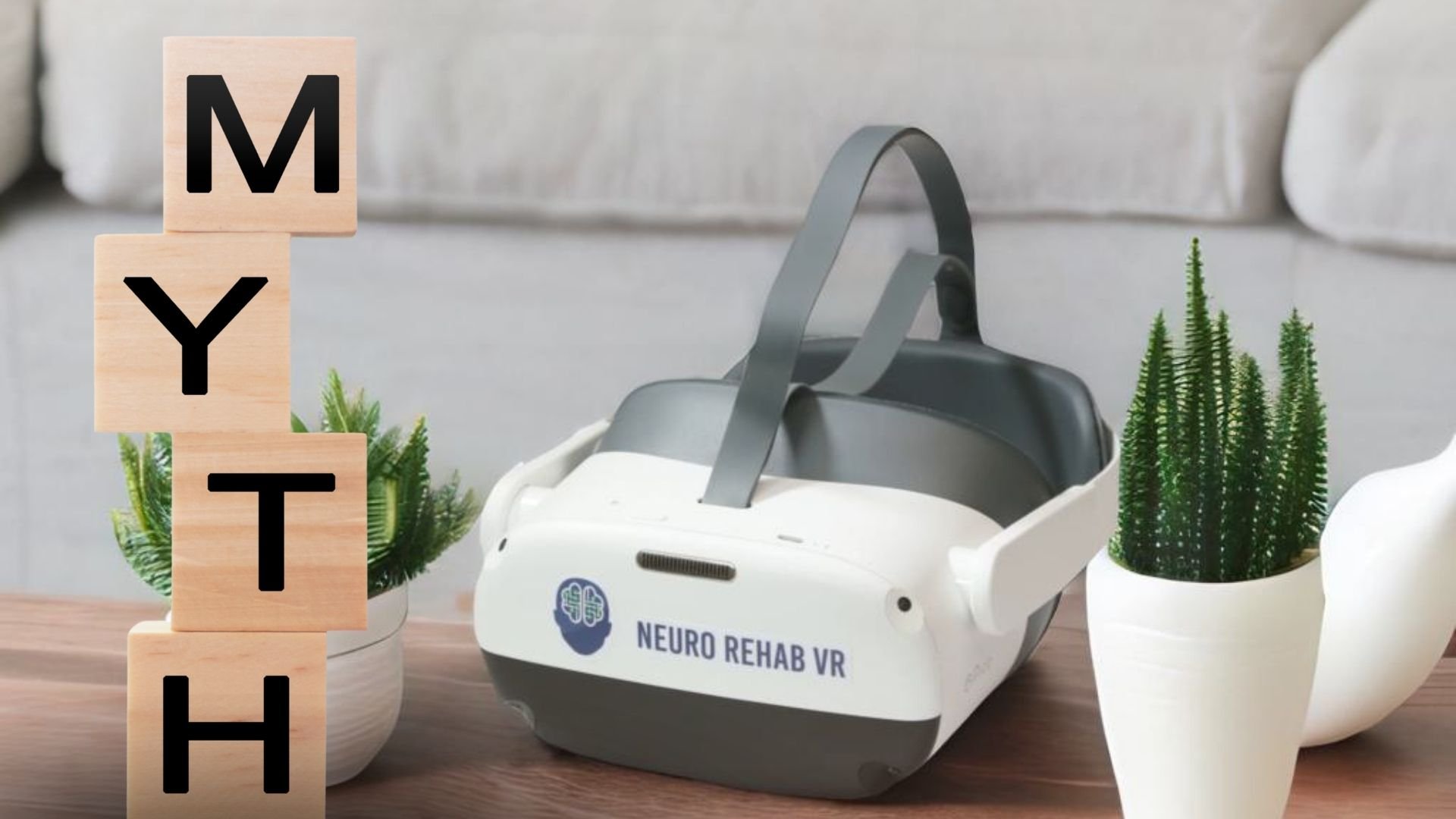The Science behind Virtual Reality Induced Motion Sickness
Written by: Brianna Hodge
If you’ve ever hesitated to try Virtual Reality (VR) because you’ve heard it causes motion sickness in most people, you’re not alone. The idea that VR is universally nauseating has been a barrier for many potential users, from gamers to patients exploring innovative rehabilitation solutions. But is this really true? Is motion sickness an inevitable side effect of VR? Let’s unpack this pervasive myth and examine the science, alongside insights from research and real-world applications.
The Roots of the Myth
The notion that VR universally causes motion sickness stems from the early days of the technology. In the 1990s, VR systems were clunky and had low frame rates, leading to mismatches between what the eyes saw and what the body felt. This sensory conflict was often disorienting and sometimes induced nausea, a phenomenon known as “simulator sickness.”
Fast-forward to today, and VR technology has advanced by leaps and bounds. Headsets now boast higher refresh rates, improved resolution, and better motion tracking. Yet, the stigma from VR’s early years persists, creating a misunderstanding that discourages people from experiencing its transformative potential.
Understanding Motion Sickness in Virtual Reality
Motion sickness occurs when there’s a disconnect between visual input and the vestibular system, which governs balance and spatial orientation. For example, if you’re wearing a VR headset and moving through a virtual world while your body remains stationary, your brain may perceive conflicting signals, leading to discomfort.
However, research shows that susceptibility to motion sickness varies widely among individuals and depends on several factors, including:
-
High frame rates and low latency minimize sensory mismatches.
-
Smooth, predictable movements in VR environments reduce the likelihood of nausea.
-
Regular exposure to VR can help users acclimate over time.
Debunking the Myth with Science
The claim that “VR causes motion sickness in most people” is not supported by current research. A study published in Frontiers in Virtual Reality found that while some users may experience initial discomfort, the majority adapt quickly and report no significant issues after repeated exposure (Weech et al., 2019). The study emphasized that technological improvements and user training have significantly reduced the prevalence of VR-induced motion sickness.
Another study in the Journal of NeuroEngineering and Rehabilitation examined the use of VR in rehabilitation settings. Researchers found that patients with neurological conditions, including stroke survivors, successfully used VR-based therapy with minimal reports of motion sickness (Laver et al., 2020). These findings suggest that modern VR systems are well-tolerated, even by individuals with heightened sensory sensitivities.
Neuro Rehab VR: Real-World Applications
Neuro Rehab VR, a pioneer in using VR for physical and cognitive rehabilitation, has firsthand experience debunking this myth. Their immersive therapy programs are designed with user comfort in mind, utilizing high-quality hardware and carefully curated virtual environments. For example, their gait training modules allow stroke patients to practice walking on uneven surfaces or inclines in a virtual setting. Feedback from therapists and patients consistently highlights the system’s ease of use and low incidence of motion sickness.
One patient, a stroke survivor, described their experience with Neuro Rehab VR as “seamless and surprisingly comfortable.” Initially apprehensive due to concerns about dizziness, they found the virtual environment engaging and nausea-free, even during dynamic activities like balance training.
Factors That Minimize Motion Sickness
Modern VR systems employ several strategies to reduce the risk of motion sickness:
High Refresh Rates: Most contemporary VR headsets operate at 90 Hz or higher, providing smooth visuals that closely mimic real-world motion.
Optimized Field of View: Narrower fields of view can reduce sensory conflicts for some users.
Head Tracking: Advanced motion tracking ensures that virtual movements align precisely with physical movements.
Comfortable Content: VR experiences that limit sudden or erratic movements are less likely to induce discomfort.
The Role of Adaptation
For users who do experience initial discomfort, adaptation plays a crucial role. A study in Virtual Reality journal found that repeated exposure to VR environments significantly reduces symptoms of motion sickness over time (Stanney et al., 2020). This phenomenon, known as habituation, occurs as the brain learns to reconcile sensory inputs more effectively.
Another study published in Cyberpsychology, Behavior, and Social Networking examined the effectiveness of gradual exposure techniques to reduce motion sickness. Participants who started with low-intensity VR experiences and progressively advanced to more complex environments reported substantial improvements in comfort and engagement (Freeman et al., 2018).
Case Studies in Rehabilitation
Numerous case studies highlight the effectiveness and tolerability of VR therapy. For example, a study in the Journal of Vestibular Research investigated the use of VR for vestibular rehabilitation. Participants engaged in virtual balance exercises, and researchers noted that only a small fraction experienced minor discomfort, which diminished over time with regular sessions (Kim et al., 2021).
Another study published in Pain Reports explored the use of VR for chronic pain management. Patients immersed in calming virtual environments reported significant reductions in pain levels without notable side effects such as motion sickness (Trost et al., 2020). These findings emphasize the importance of carefully designed VR content in minimizing discomfort while maximizing therapeutic benefits.
Addressing the Stigma
The persistence of the motion sickness myth can deter people from exploring VR’s benefits, particularly in healthcare settings. Educating users about the advances in VR technology and the strategies employed to enhance comfort is crucial for breaking down this barrier.
Clinics and therapists often conduct orientations for new users, explaining how the system works and addressing any concerns about motion sickness. These sessions include demonstrations of the hardware’s capabilities and opportunities for users to acclimate to the virtual environment gradually. This proactive approach has been instrumental in building trust and encouraging participation.
Moving Beyond the Myth
The idea that “VR causes motion sickness in most people” is not only outdated but also undermines the incredible potential of this technology. Modern VR systems are designed with user comfort at the forefront, incorporating advanced hardware and thoughtful content to minimize discomfort. Research and real-world applications consistently demonstrate that the majority of users can engage with VR safely and effectively.
As VR continues to gain traction in fields like rehabilitation, it’s time to shift the narrative. By dispelling misconceptions and highlighting success stories, we can pave the way for wider adoption and help more people benefit from this transformative technology. Whether you’re a therapist considering VR for your practice or a patient exploring new treatment options, rest assured that motion sickness is not an inevitable part of the experience.
-
Freeman, Daniel, et al. "Automated Psychological Therapy Using Immersive Virtual Reality for Patients With Fear of Heights." Behaviour Research and Therapy, vol. 109, 2018, pp. 1-8. https://doi.org/10.1016/j.brat.2018.07.003.
Kim, Hyun-Jung, et al. "The Efficacy of Virtual Reality-Based Vestibular Rehabilitation." Journal of Vestibular Research, vol. 31, no. 2, 2021, pp. 111-121. https://doi.org/10.3233/VES-200752.
Laver, Kate, et al. "Virtual Reality in Stroke Rehabilitation: A Systematic Review and Meta-Analysis." NeuroRehabilitation, vol. 47, no. 1, 2020, pp. 17-25. https://doi.org/10.3233/NRE-192866.
Stanney, Kay, et al. "Mitigating Cybersickness in Virtual Reality." Virtual Reality, vol. 24, 2020, pp. 289-299. https://doi.org/10.1007/s10055-019-00402-3.
Trost, Zina, et al. "Effectiveness of Virtual Reality Distraction for Pain Management: A Randomized Controlled Trial." Pain Reports, vol. 5, no. 8, 2020, pp. e847. https://doi.org/10.1097/PR9.0000000000000847.
Weech, Sam, et al. "Presence and Cybersickness in Virtual Reality Are Negatively Related: A Review." Frontiers in Virtual Reality, vol. 1, 2019, pp. 1-12. https://doi.org/10.3389/frvir.2019.00001.






